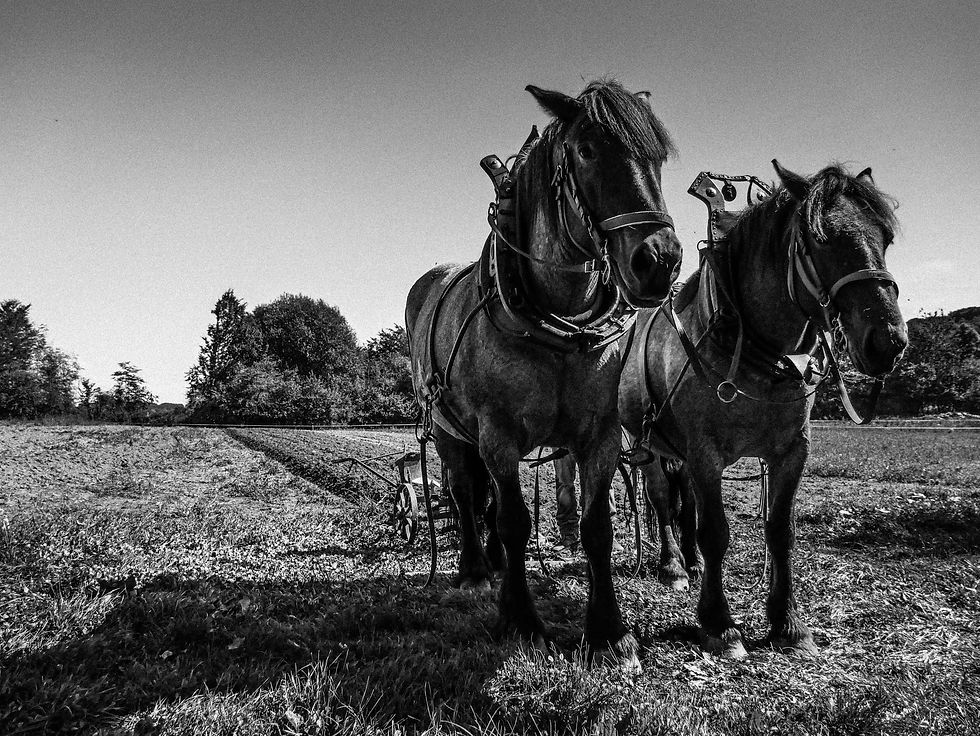Neolithic Europe - Danube Valley Culture
- Sylvia Rose

- Nov 7, 2023
- 4 min read
The Danube River flows through nearly a dozen countries including modern day Germany, Austria, Hungary, Romania, Bulgaria and Ukraine. Inspiration for romance, formation of early trade routes, Neolithic and advanced valley cultures, the Danube Valley is vibrant with history, myth and mystique.
See also:
Among the world's early cultures, the Danube Valley group flourish in Neolithic times to the approximate beginning of the European Bronze Age in the 4th millennium BCE. The people worked the land, growing crops such as wheat, corn and barley.
They delve into selective crop breeding and agricultural enhancements such as soil irrigation. Some food grains found in settlement areas date back to 9500 BCE, just after the end of the last ice age officially recognized as c.10,000 BCE.
See also:
Large areas of glaciation prevail in Canada and Northern Eurasia. To the south, the weather is mild enough to foster the development of advanced Neolithic cultures. Woven objects with natural materials include fences and walls of houses.
Spinning, originally done by hand, first appears about 17,800 BCE in string skirts. Weaving came a few centuries later, about 12,000 BCE. The first incidence of fabric dyeing comes from the large Neolithic settlement at Çatalhöyük in southern Anatolia. Red dyes, possibly from red ocher are in demand in the Neolithic world.
See also:
Early people in the Danube Valley keep a variety of domestic animals such as cattle, sheep, pigs and chickens. Dogs are part of the population as workers and protectors. Although there are signs of close bonds between dog and human, the concept of keeping pets did not arise until well into the Victorian era of the 19th century.
The domestication of horses in c. 3800 BCE by the Ponti-Caspian Steppe people affect the Danube cultures about a thousand years later. Signs of domesticated horses go back to about 2800 BCE in Europe. By 2000 BCE the horse is found in the company of people throughout Eurasia for work, transportation and trade.
See also:
The Danube Valley cultures use oxen to pull plows until the horse arrives. Those who cannot afford oxen hitch themselves or family members to the plow. The plow appears in agriculture c. 4000 - 3000 BCE, made of heavy wood which could create grooves in soil.
Before the plow, planting was done by hand, possibly with a forked digging stick. The animal-drawn implement speeds up the process, meaning more seed in the soil, more food for the family and enough left over for trade.
People supplement agriculture and domestic animal keeping with hunting aurochs, wild boar, deer and smaller animals. They also subsisted from fishing, and gathering berries, nuts, wild fruit and roots.
See also:
Main sites of Danubian settlement and early cultures include Bylany in Bohemia and Köln-Lindenthal in Germany. In the Neolithic Age pottery and permanent habitations indicated the development of the people from nomadic hunter gatherers to more established agrarians. They practice animal husbandry as well as specialized crop breeding.
Ruins of an early Neolithic village exist c. 4300 - 4100 BCE along the River Rhine on the outskirts of Cologne (Köln) or Köln-Lindenthal. The site contains the remains of timber long houses. Borrow pits, areas of earth dug up and moved to another area, attest to soil circulation.
See also:
Through the ages the settlement is almost constantly occupied. At least twenty-one houses or buildings existed at a time, surrounded by wall(s). The New Stone Agers liked their libations. The earliest clear evidence of beer brewing appear in c. 4000 BCE in Sumeria (Mesopotamia).
Cross-culturally, honey mead is a drink of choice, but making mead involves a lot of honey, more than one hive or bee nest can provide, especially during feasts. The prevalent fermented drink of ancient Europe is made from wheat and other grains as agriculture develops throughout the land. From wild apples comes juice and cider.
See also:
The Neolithic period heralds the beginning of a favorite modern dessert - pies. The pie appears in c. 9500 BC as a sweet treat of pastry dough filled with fruit, honey, butter and grains baked on hot coals.
Apple cultivation begins c. 6800 in Mesopotamia. The origin of pastry comes from delicacies served to Egyptian rulers. Porridge is another food common in the Neolithic, made with grains boiled in milk.
See also:
A standard tool of Neolithic settlers is the shoe-last celt, a long slender polished stone tool for digging and felling trees. The celt is an axe or adze head. It appears c. 7000 BCE with other tools such as chisels, often made from stones such as jadeite, diorite, or schist.
See also:










